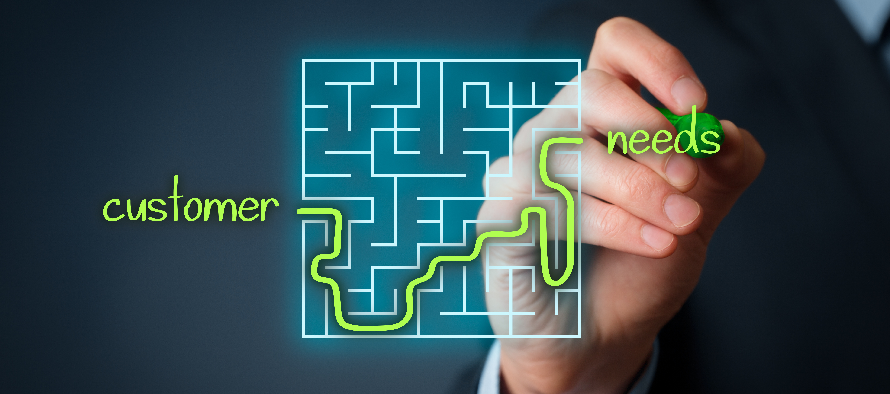
Big Data is a treasure chest of insights. Within the data businesses collect can be found useful information about the behaviour, demographics, purchase patterns, and buying preferences of customers. By properly analysing data, you have the potential to know what your customers want, even before they realise they want it.
Past behaviour often guides future behaviour. If you understand the habits or preferences of a buyer or group of buyers, you can be more strategic in your communication and connection with them. Of course, this depends on how you use your data. As we discussed in a previous blog, having data is not enough—you must be able to analyse and interpret it in such a way that it yields important insights you can use to improve your business.
Maximising Big Data analysis allows you to develop better product campaigns as well as understand what new products or services you should consider offering next. It also can influence customer service practices—another business area which produces data critical to enhancing your product portfolio and offerings.
Using Big Data to Understand your Customers
Big Data has huge benefits for an organisation in its journey to better understand the individual buyer and the market as a whole. Dig into it to find data points that paint a picture of how your customer interacts with and feels about the brand and products or services. Here are some important points on using Big Data to understand your customers:
- Capture all the data and study it on one platform. This ensures you’re not missing anything and makes it easier to find buying patterns.
- Prioritising data quality over quantity is important, and focus on relevant information. Since we’re talking about what your customers want, data such as buying preferences and past purchases will be useful. Read our post on finding the right data to learn more about this point.
- Be as agile as possible in your promotions and campaigns. Customer motivations don’t stand still. They keep changing and are impacted by many external factors. Thus, you’d want to regularly gather and analyse data to ensure that you can adjust as necessary and develop the most relevant offers to your audience.
Look at your data holistically. Find all the touch points with your audience: website, social media, email, and other channels. Determine what platforms they use (e.g. desktop, mobile) as a complementary data set. Correlate and interpret the data, considering your customers’ actions and motivations.
Data Insights for the Customer Journey
The customer journey has become a critical part of marketing. In a nutshell, it’s the roadmap from an initial connection to conversion, purchase, and after-sales. You can use predictive marketing—defined as the analysis of existing customer data to identify patterns and predict future trends and outcomes—to make predictions on what your customers may want in the future in terms of products, services, or customer support. Currently, only about 25-percent of organisations are using predictive marketing, which means there is tremendous opportunity in this area.
Every touch point expands the story of your customer and reveals much more about what they like, which marketing and purchasing channels they prefer, and the type of payment they frequently use. This 360-degree view gives businesses a more in-depth view of customer behaviour.
Big Data offers a vehicle to harness all those customer insights and develops a comprehensive portrait of your ideal customer. How can you use this “portrait”? Data is nothing without context. Proper analysis delivers actionable insights that you can use to improve your customer personas. This, in turn, enables you to expand your ability to anticipate what your customer will want in their customer journey and experience, based on your improved customer personas.
Collect customer data across all platforms and enrich it further by correlating it with other data that provides more context. For example, a customer’s data profile may inform you that a specific persona is more likely to shop for a particular item. However, your contextual data might include other factors, such as the fact that it’s a seasonal product. With this correlation, you could then set up campaigns to target this persona based on that particular product but only at certain times of the year. This results in more efficiency in terms of product marketing and production.
You can use predictive marketing to get a better idea of what a customer will want as well as inform you of what campaigns will work best. Once you turn people into customers, you can use Big Data to know how and where you should communicate with them. This is especially important since bad customer service can really cost you. In fact, according to recent studies, 68-percent of customers say they would switch vendors due to poor customer service.
If you find that your customers are more likely to tweet about a service issue rather than call customer service, you should focus your efforts on social media. You could also find key data in conversations between your customer service department and customers in social media. Southwest Airlines uses speech analytics to extract data-rich info from live-recorded interactions between customers and customer service representatives. The data insights extracted using this method is currently helping them learn more about what customers want and expect as well as improve their after-sales efforts.
Social media can get you a real “pulse” on what your fans or customers currently like. Look at data from relevant social media platforms and pay close attention to engagement metrics as well as conversion metrics. This can inform your social media marketing strategy. For example, if you know your social media followers respond well to a particular product, create a Facebook ad for that product and target users who have a similar profile to those who have bought it. You can go one step further; with this data, you’ll have a better idea of your customers’ preferences and use it to come up with more products that reflect the characteristics of the current and past products which became “big hits” with your customer base.
Using Big Data to Effectively Personalise Offers
Westpac, one of Australia’s largest financial institutions, created the “Know Me” program which customises offers based on Big Data. This program uses customer data to understand each client’s interactions with the bank, digital or in-person. The program promotes relevant offers on a one-on-one level and has yielded over $22 million in profits for the bank.
The bank also uses a “next best offer” program which uses data points to market products based on what the customer needs, and not what the bank wants to sell. This has led to a beneficial transition from typical approaches which just blindly advertise or promote the products or services the bank saw as lucrative.
Creating your Big Data plan
While knowing what your customers will want, even before they realise they want it, may seem like magic, Big Data can actually bring you a lot closer to this goal. However, as we always stress, data is only as good as how you use it and the insights that you get from it. You still need proper analysis and interpretation to make it effective.
Latize’s intelligent data management platform Ulysses harmonises internal and external data sets, allowing you to derive from it key insights about your business, from your customers and products to internal processes and marketing, which you can use to find opportunities and gain a competitive advantage. Find out more about how Ulysses works and what it can do for your business today.



